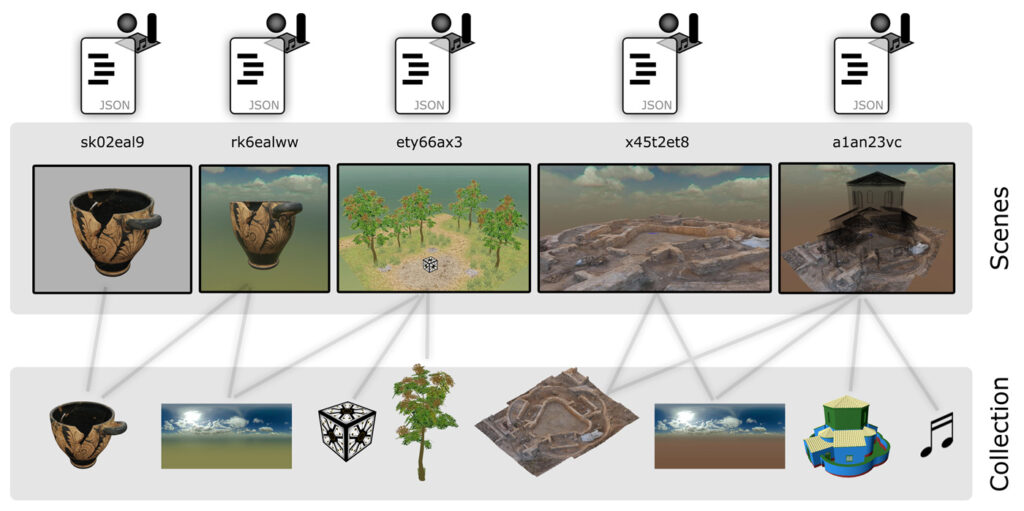This page gives you an overview of these two crucial concepts in ATON framework and why such distinction. You can find a full, detailed description in the open-access main reference paper (section 3.2).
What is a Collection in ATON?
A collection is a set of items – including 3D models, tilesets, panoramas, audio sources, etc. – that we intend to use to create an interactive 3D presentation or space. See here how to populate your collection.
What is a Scene in ATON?
A scene is an arrangement of collection items, with hierarchical organization. A scene may indeed include specific viewpoints (POVs), keywords, semantics, soundscape, and much more. A scene may indeed also consist of a single item (e.g., a 3D model) suitable for 3D galleries of online virtual museums, with each scene corresponding to a single collection item.
The scene itself is stored as a compact JSON file (scene descriptor), similar to the svx JSON used by the Smithsonian Voyager – thus very compact in terms of storage. You can find here an example (the “welcome” scene). More importantly, a unique identifier (scene ID or sid) is associated to a given scene.

Scenes can be consumed by the official ATON front-end “Hathor” or any custom front-end/web-app based on ATON that you create.
Why such distinction?
There are several advantages (also highlighted in the main paper) – here a few:
- Re-use: The same item (3D model, panorama, audio, etc.) can be employed (and re-styled) in different scenes, avoiding unnecessary duplication in terms of storage
- Update: an item (e.g., a 3D model, a panorama, etc.) can be improved by content creators and easily updated in the collection, automatically affecting all the scenes in which such item is referenced
- Caching: in web-based scenarios, this approach allows a) to facilitate browser caching (e.g., when switching to different scenes referencing the same asset) and b) to avoid duplicate client requests in the same scene (e.g., multiple instances of the same 3D model, like a tree)
- Cloning: a scene can be easily cloned, maintaining a very small footprint in terms of storage, and allowing users to work on different copies or hypotheses of a 3D virtual environment
- External references: a scene may even contain references to cross-domain sources (e.g., a 3D model or tileset located in another ATON instance, or accessible through a public url) thus allowing the distribution of content resources across multiple nodes or servers
